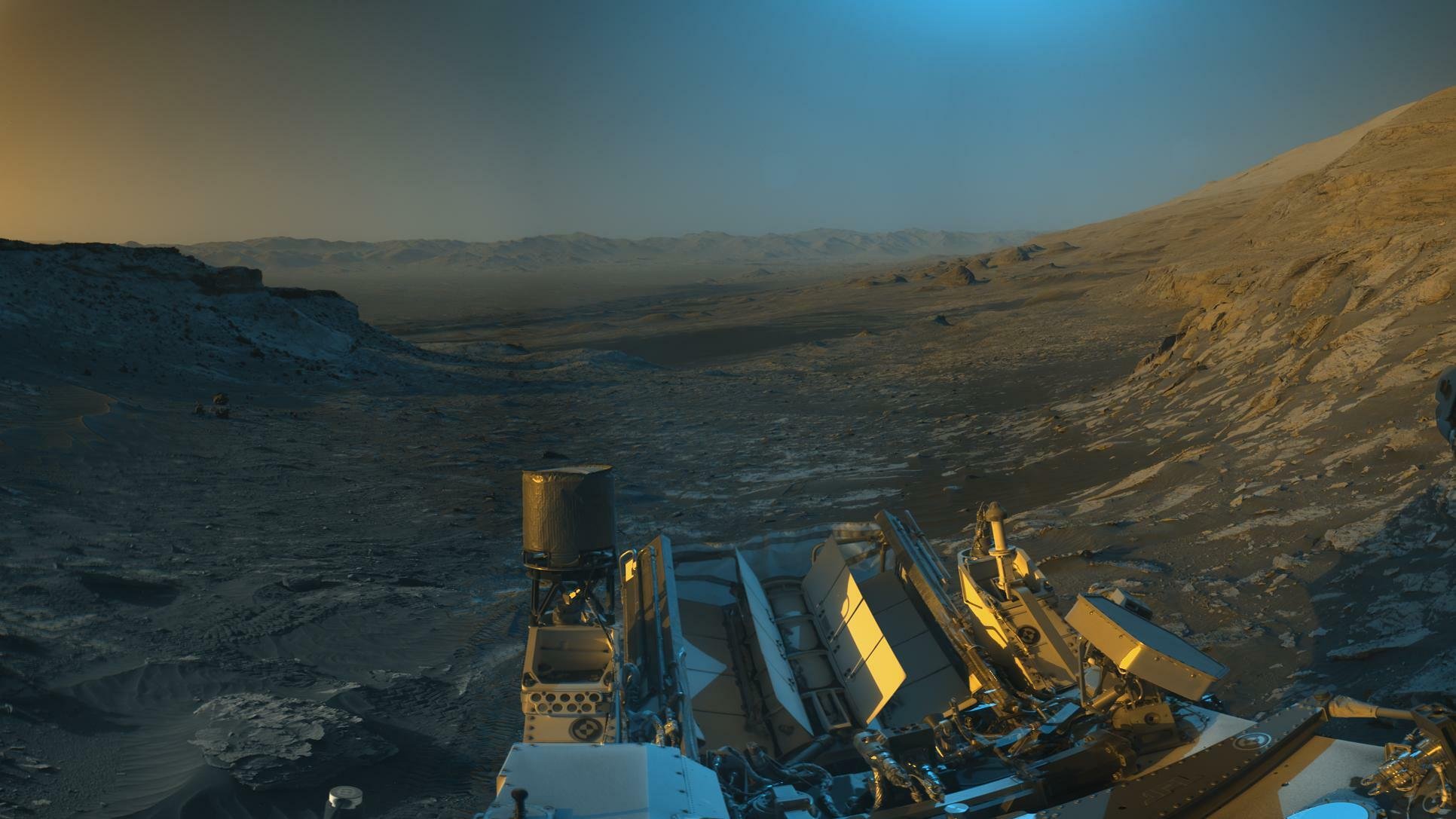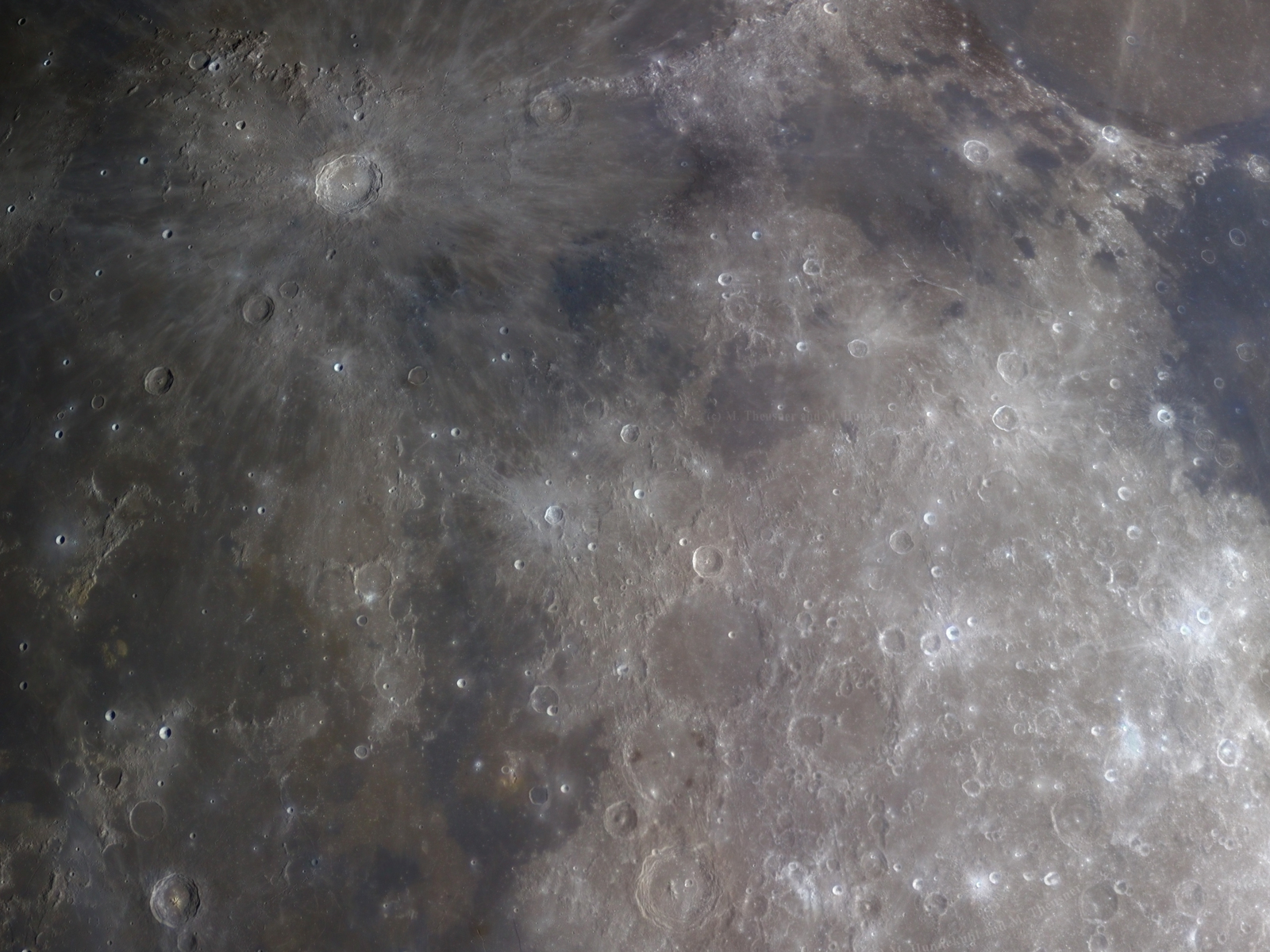 I am honored to be the host of The Carnival of Space’s 22nd edition with a focus on the art of space. Wanderingspace considers images of our Solar neighborhood to be art in their own right, so here the line between art and science is thinly drawn to begin with. Enjoy the links!
Recently artist Bettina Forget had one of her creations featured on the back cover of a recent Planetary Society periodical. She posts at her Inside the Artist’s Studio blog and recently mused on sketching at the eyepiece of a telescope and its benefits. Be sure to also take a look at her Moon Series, which is where the previously mentioned Planetary Society featured painting of Io and Europa can also be viewed.
I am honored to be the host of The Carnival of Space’s 22nd edition with a focus on the art of space. Wanderingspace considers images of our Solar neighborhood to be art in their own right, so here the line between art and science is thinly drawn to begin with. Enjoy the links!
Recently artist Bettina Forget had one of her creations featured on the back cover of a recent Planetary Society periodical. She posts at her Inside the Artist’s Studio blog and recently mused on sketching at the eyepiece of a telescope and its benefits. Be sure to also take a look at her Moon Series, which is where the previously mentioned Planetary Society featured painting of Io and Europa can also be viewed.
Another fine arts bit of space creativity can be found in the recent work of artist Robert Whitman. Pixel Pusher has an introduction to his show “Turning” which features glowing, spinning sculptures of such moons as Europa and Ganymede while another installment involves a projection of Io. The show is currently on exhibit at the Pace Wildenstein Gallery in New York City. So hop on the subway, it closes on September 29!
If you don’t just want to look at space art but actually create it, Artsnova Digital Art and Space has a few words on a new NASA Space Art Contest whose theme is “Life and Work on The Moon”.
Still feeling creative? The Wired Science Blog is hosting a NASA Slogan Contest where we all have an opportunity to come up with our own slogan and submit it. This contest is only open to entries for about another 24 hours after this goes live, so hurry over!
In the strange category, The Podcast Troubadour offers up two Carnival of Space Themes for your listening pleasure. One is more theatrical and breaks into what can only be described space carnival music while the other will shake your descent stage thrusters. Yes... theme music for The Carnival of Space. The internet is a place where anything can happen and usually does.
If you are unfamiliar with the work of IMAX in a Basement you need to take a look at what exactly is coming out of that basement. The film “Outside In” is entirely made of Cassini still images and is somehow made into what feels like a 3-dimensional voyage to Saturn without the use of any 3-d modeling software. Check out his new offering of 100 Megapixels of Saturn Ring Magnificence with both a hires still and a sneak-peek video segment.
Bridging the gap between art and pure space science, I feel the need to link to Don Mitchell’s Mental Landscapes site for his Soviet Venus Images collection. This is not a blog... i know... but if you scroll about half-way down the page you will see his re-worked Soviet Venera images of the surface of Venus which is just about the most incredible feat i have seen by any freelance imager. Maybe you are familiar with his work already, but if not... every fan of space exploration needs to know that these images now exist thanks to Don.
Riding with Robots reflects on that recent Hubble image of Ceres in, “The Clear Power of a Fuzzy Image” which according to the author “embodies his fascination with space exploration”.
While we are in a reflecting mood Cumbrian Sky compares the 1981 experience of images of Iapetus coming from Voyager to the 2007 experience of images of Iapetus coming directly to our computer screens from Cassini. Space exploration has certainly changed in 25 years. If you want to see more about the recent Iapetus flyby be sure to check out Emily Lakdawalla’s post on the Voyager Mountains and her most excellent link at the end of the article to the full set of images and metadata from the event.
For some off topic posts, A Babe in the Universe offers a new video Images of a New Space Age. Sorting Out Science considers the recent meteorite impact in Peru. Unenumerated has some real options analysis for space projects and takes a fresh look at risk evaluation for deep space missions. Robot Guy posts a whole episode of The Universe’s Mars Episode. Astroblogger captures the ISS whiz past Jupiter. Hobbyspace is telling us about how Google Moon is getting sharper as well as a new 3-D Hubble IMAX movie in the works. And Mr. Gerhards is hoping to record the goings on in going to see Shuttle launches before its too late.
Finally, some posts on two books from completely opposite ends of the spectrum. Lunar Photo of the Day takes a peek into the book-by-committee publication, “The Scientific Context for Exploration of the Moon” which is apparently the kind of book that may hold some sway in terms of Lunar decision making over at NASA. On the other hand, Music of the Spheres blogs on “Cosmos for Beginners” which, unlike the previous title, could be a nice purchase for children of all ages between 12 and 90.
Well, thats all for now. Make sure you bookmark some of these excellent blogs and maybe even subscribe to their RSS feeds. Remember, its the internet… all the planetary love you can ever ask for and its all for free!






























 I am honored to be the host of The Carnival of Space’s 22nd edition with a focus on the art of space. Wanderingspace considers images of our Solar neighborhood to be art in their own right, so here the line between art and science is thinly drawn to begin with. Enjoy the links!
Recently artist Bettina Forget had one of her creations featured on the back cover of a recent Planetary Society periodical. She posts at her
I am honored to be the host of The Carnival of Space’s 22nd edition with a focus on the art of space. Wanderingspace considers images of our Solar neighborhood to be art in their own right, so here the line between art and science is thinly drawn to begin with. Enjoy the links!
Recently artist Bettina Forget had one of her creations featured on the back cover of a recent Planetary Society periodical. She posts at her